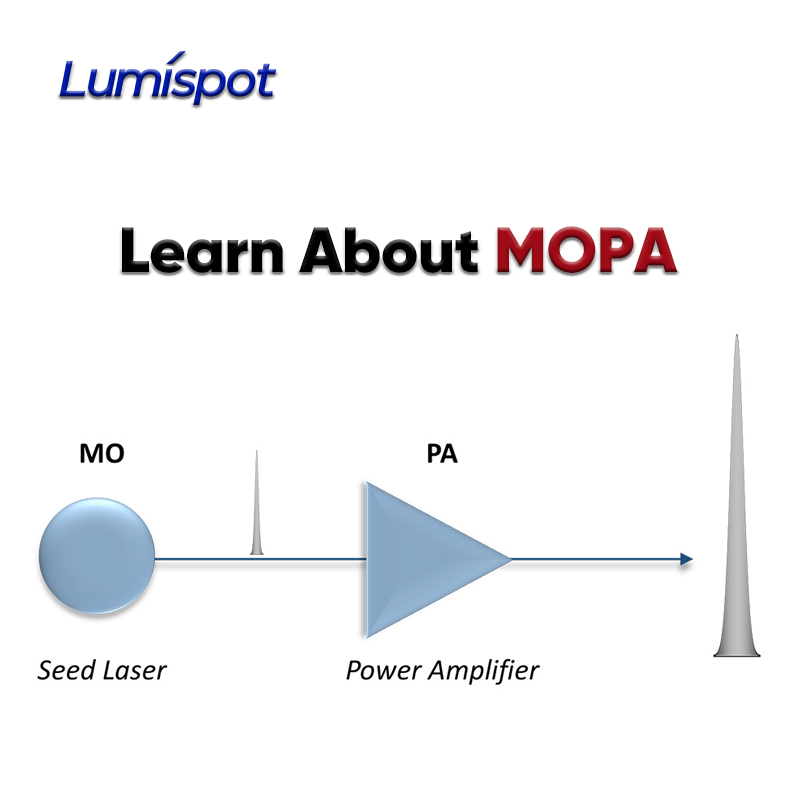MOPA (Master Oscillator Power Amplifier) is a laser architecture that enhances output performance by separating the seed source (master oscillator) from the power amplification stage. The core concept involves generating a high-quality seed pulse signal with the master oscillator (MO), which is then energy-amplified by the power amplifier (PA), ultimately delivering high-power, high-beam-quality, and parameter-controllable laser pulses. This architecture is widely used in industrial processing, scientific research, and medical applications.
1. Key Advantages of MOPA Amplification
① Flexible and Controllable Parameters:
- Independently Adjustable Pulse Width:
The pulse width of the seed pulse can be adjusted independently of the amplifier stage, typically ranging from 1 ns to 200 ns.
- Adjustable Repetition Rate:
Supports a wide range of pulse repetition rates, from single-shot to MHz-level high-frequency pulses, to meet diverse processing needs (e.g., high-speed marking and deep engraving).
② High Beam Quality:
The low-noise characteristics of the seed source are maintained after amplification, delivering near-diffraction-limited beam quality (M² < 1.3), suitable for precision machining.
③ High Pulse Energy and Stability:
With multi-stage amplification, single-pulse energy can reach the millijoule level with minimal energy fluctuation (<1%), ideal for high-precision industrial applications.
④ Cold Processing Capability:
With short pulse widths (e.g., in the nanosecond range), thermal effects on materials can be minimized, enabling fine processing of brittle materials like glass and ceramics.
2. Master Oscillator (MO):
The MO generates low-power but precisely controlled seed pulses. The seed source is typically a semiconductor laser (LD) or fiber laser, producing pulses via direct or external modulation.
3.Power Amplifier (PA):
The PA uses fiber amplifiers (such as ytterbium-doped fiber, YDF) to amplify the seed pulses in multiple stages, significantly boosting pulse energy and average power. Amplifier design must avoid nonlinear effects such as stimulated Brillouin scattering (SBS) and stimulated Raman scattering (SRS), while maintaining high beam quality.
MOPA vs. Traditional Q-Switched Fiber Lasers
|
Feature |
MOPA Structure |
Traditional Q-Switched Lasers |
|
Pulse Width Adjustment |
Independently adjustable (1–500 ns) | Fixed (dependent on Q-switch, typically 50–200 ns) |
|
Repetition Rate |
Broadly adjustable (1 kHz–2 MHz) | Fixed or narrow range |
|
Flexibility |
High (programmable parameters) | Low |
|
Application Scenarios |
Precision machining, high-frequency marking, special material processing | General cutting, marking |
Post time: May-15-2025

